¿Sabes lo que come tu animal favorito y cuál es su tamaño? Lo sabrás si lo buscas en esta lista. Ten presente que la altura de un animal de cuatro patas se mide desde la cruz (los hombros) hasta el suelo. Su longitud se mide desde el hocico hasta el extremo de la cola.
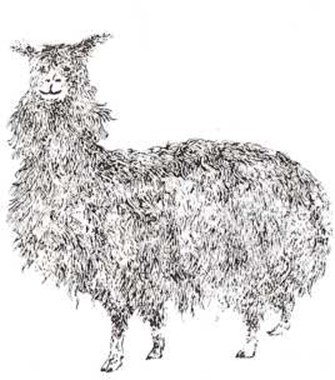
Alpaca. Mide cerca de 1,25 m de alto. Parece un pequeño camello con el cuerpo muy peludo. En las montañas de Sudamérica, donde viven las alpacas, se hacen vestidos y mantas con lana de alpaca. Las alpacas son mansas y viven en manadas.
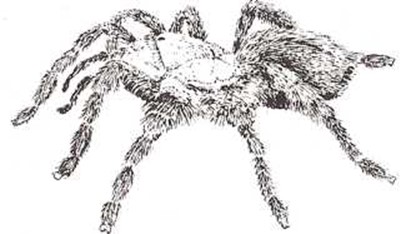
Araña. Las arañas viven en casi todas partes. Tienen ocho patas, y muchas de ellas, ocho ojos. Comen insectos que atrapan en sus redes. Algunas grandes arañas tarántulas comen pájaros, lagartos y ratones.
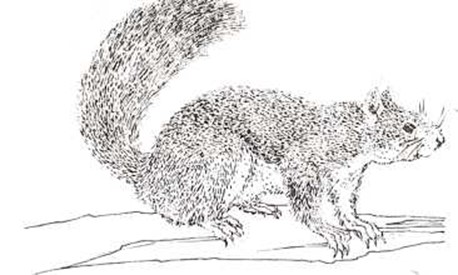
Ardilla. La ardilla vive en muchas partes del mundo. Come frutas, nueces, semillas e insectos. En otoño, las ardillas encuentran toda la comida que quieren y la almacenan para el invierno. La ardilla gris mide unos 60 cm de largo.

Armadillo. El armadillo de nueve bandas vive en el sur de los Estados Unidos, en México y en América del Sur. Mide unos 60 cm de largo. Cuando se asusta, se acurruca formando una bola y su armadura ósea lo protege. Los armadillos cazan de noche para comer. Comen gusanos e insectos.
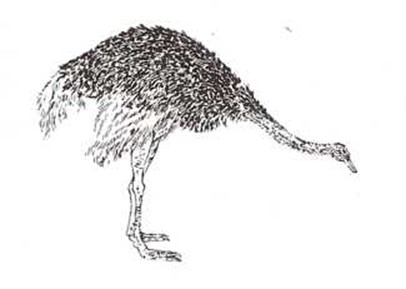
Avestruz. El avestruz es la mayor de las aves, pero no puede volar. Sus alas son demasiado pequeñas. Pero puede correr más deprisa que un caballo de carreras. Los avestruces viven en los desiertos africanos. Comen plantas que encuentran en el desierto y, a veces, lagartos.
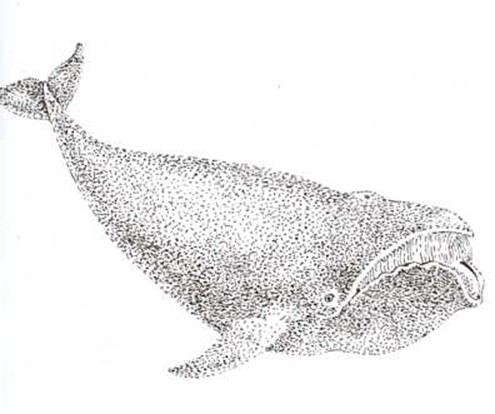
Ballena. Las ballenas viven en todas partes del océano. Las ballenas parecen grandes peces, pero en realidad son mamíferos, como el perro y el gato, y respiran aire. Las ballenas comen peces y otros animales marinos, plantas pequeñas y animales que cogen del agua. Todas las ballenas son enormes, pero la mayor es la ballena azul. Las mayores ballenas azules miden 30 m de largo.

Bisonte americano. El bisonte puede llegar a medir unos 2 m de alto y 4 m de largo. Antiguamente había millones de bisontes. Hoy día no hay más que unos pequeños rebaños en Wyoming y Colorado, Estados Unidos, y en Al-berta, Canadá.
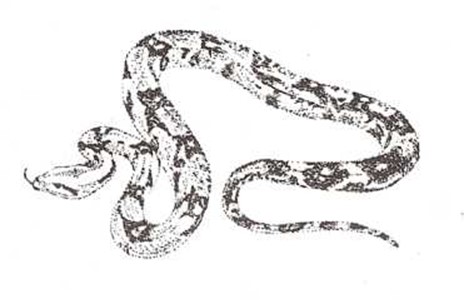
Boa constrictora. Hay muchas clases de boas, pero todas ellas se procuran la comida de la misma manera. La boa se enrolla alrededor de un animal y lo aprieta. El animal no puede respirar y muere. La boa se traga entonces al animal. Una boa puede medir hasta 4,50 m de largo. Come ratas, pájaros y otros animales pequeños.

Buey almizclero. El peludo buey almizclero vive en el extremo norte de Alaska, Canadá y Groenlandia. Excava en la nieve con sus patas para encontrar el musgo y las ramitas que come. Los bueyes almizcleros viven en manada. Mide más de 2 m de largo y 1,50 m de alto.

Búfalo. Grandes manadas de búfalos africanos viven en el sur y este de Africa. El búfalo africano mide menos de 2 m de alto. Sus cuernos son largos y afilados. Si un búfalo africano se enfada, embiste y casi nada puede pararlo. El búfalo africano come hierba.
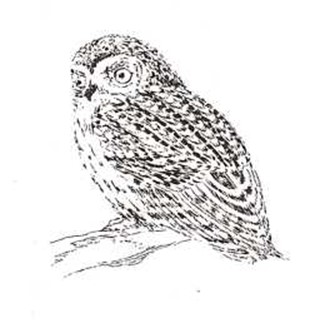
Búho. Los búhos viven en casi todas partes del mundo, en bosques, desiertos, prados y graneros. La mayoría duermen durante el día. Por la noche cazan animales como ratones, conejos, ratas, peces, sapos, insectos y gusanos. Pueden volar sin hacer ruido. Hay muchas clases de búhos.
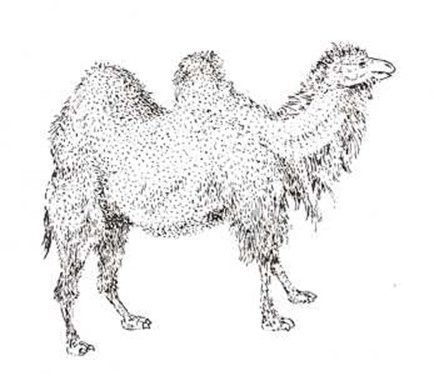
Camello. El camello de Arabia tiene una sola joroba. Vive en los cálidos desiertos arenosos de Arabia y del norte de África. El camello bac-triano tiene dos jorobas. Vive en los desiertos rocosos y las llanuras nevadas de Asia Central. La mayoría de camellos miden 2 m de alto. El camello come dátiles, grano y hierba seca.

Castor. El castor vive cerca de los ríos en América y el norte de Europa y Asia. Come cortezas de árboles y plantas acuáticas y puede derribar, mordiéndolos, árboles delgados y pequeños, para hacer con ellos una presa. El castor mide poco más de 1 metro. Tiene una cola ancha y plana.
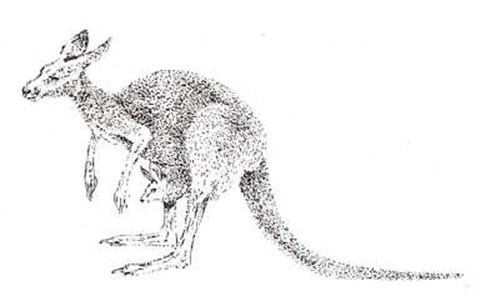
Canguro. Los canguros viven en Australia y en las islas vecinas. Las madres llevan las crías en unas bolsas que tienen en el estómago. Al nacer, una cría de canguro sólo mide 2 centímetros. Pero un canguro mayor puede tener casi 2,50 m de alto y puede dar saltos de trece metros. El canguro come plantas.

Cebra. La mayoría de cebras viven en las llanuras de hierba de África. Viven en manadas comiendo hierba. Las cebras parecen caballos con rayas, pero cada clase de cebras tiene distintas clases de rayas. La cebra mide algo menos de 1,50 m de alto.
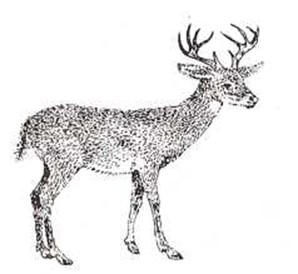
Ciervo. Es el único animal que tiene cuernos ramificados. El ciervo rojo, el ciervo de cola blanca, el reno, el alce y el caribú son variedades del ciervo. El pudu, el ciervo más pequeño, tiene unos 30 cm de alto. El alce americano, el mayor ciervo, tiene unos 2 m de alto. Los ciervos comen hierba y plantas.

Cipmunk. El cipmunk parece una ardilla rayada, con una corta cola. Vive en túneles subterráneos donde guarda montones de nueces, semillas y frutos secos y bayas. Los cipmunks viven en América del Norte y el norte de Asia.
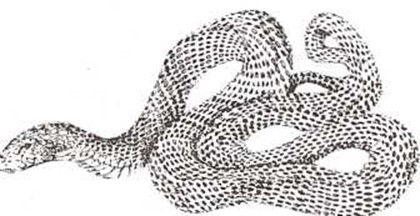
Cobra. Esta serpiente puede lanzar un chorro de veneno a varios decímetros de distancia a los ojos de un animal o de una persona. El veneno mata a los animales pequeños y puede dejar ciega a una persona. La mayoría de cobras escupidoras tienen 1,50 m de largo. Comen animales pequeños. Las cobras escupidoras viven en Africa.
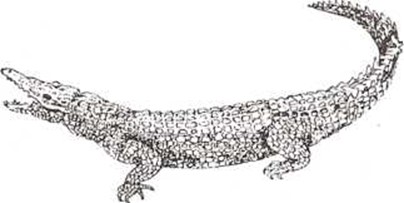
Cocodrilo. El cocodrilo vive en pantanos y en las riberas de los ríos, en muchas zonas cálidas del mundo. Es el mayor y más pesado de los reptiles vivientes. Algunos cocodrilos miden más de 6,50 m de largo. El cocodrilo come cualquier animal que encuentre, incluso al hombre. Los caimanes son primos de los cocodrilos.
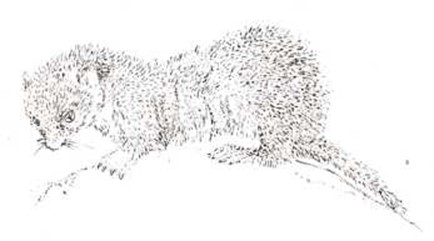
Comadreja. Vive en casi todas partes del mundo. Se puede mover muy rápidamente y entrar

Conejo. El conejo de rabo de algodón vive en las praderas de América del Norte y del Sur. En verano come plantas verdes. En invierno come ramitas y cortezas. Los conejos europeos se parecen mucho a los americanos, pero aquéllos excavan túneles para vivir en ellos. El conejo de rabo de algodón mide de 20 a 45 cm de largo.
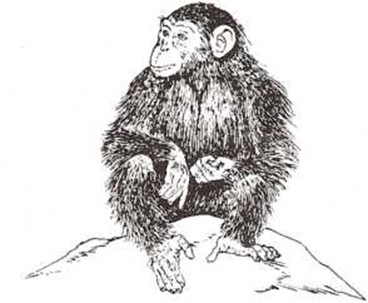
Chimpancé. Los chimpancés viven juntos en pequeños grupos en las selvas de Africa Occidental. El grupo se mueve por la selva buscando nueces, frutas y bayas. Algunos chimpancés son casi tan altos como un hombre bajo. Los chimpancés son los más hábiles de todos los monos.

Delfín. El delfín parece un pez, pero es en realidad un mamífero, como el perro, el gato o el caballo. Los delfines no pueden respirar en el agua, como los peces, sino que respiran aire. Los delfines viven en las zonas más cálidas de los océanos. Nadan en pequeños grupos y se alimentan de peces. Los delfines comunes miden unos 2 metros.
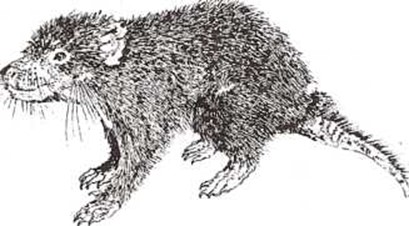
Diablo de Tasmania. El diablo de Tasmania vive en la isla de Tasmania, cerca de Australia. Mide 90 cm y es un fiero cazador. Come pequeños canguros, lagartos, pájaros y, a veces, incluso corderos. Las madres de los diablos de Tasmania tienen bolsas como los canguros hembra.

Dirago. El dingo es un perro salvaje que vive en manadas en Australia. Tiene el tamaño de un perro pastor de Escocia. La mayoría son de color marrón amarillento. Comen canguros pequeños y otros animales pequeños. Las crías de dingo son buenos animales domésticos.
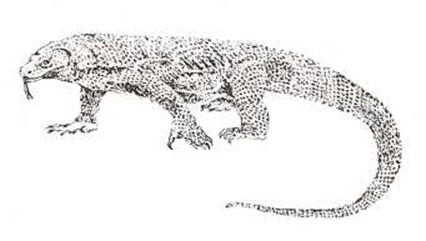
Dragón de Komodo. Este lagarto es el mayor de todos ellos. Puede llegar a medir más de 3 metros. Vive en la isla de Komodo y otros lugares del sudeste de Asia. Come animales pequeños, vivos o muertos.

Elefante. Los elefantes viven en Africa y en el sur de Asia. El elefante africano es el mayor de todos los animales terrestres. Los mayores elefantes africanos pueden medir hasta 4 m de alto. Los elefantes viven juntos en pequeñas manadas. Se alimentan de hojas.
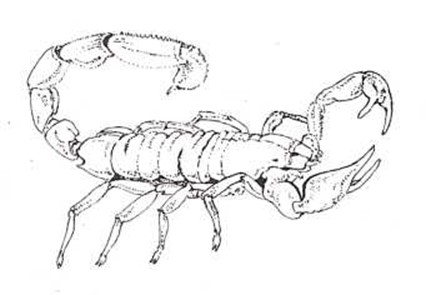
Escorpión. Los escorpiones viven en los desiertos y selvas de muchas partes cálidas del mundo. El escorpión se esconde durante el día y sale de noche a cazar. Coge insectos y arañas con sus garras y los envenena con la punta de la cola. Los mayores escorpiones miden unos 20 centímetros de largo.
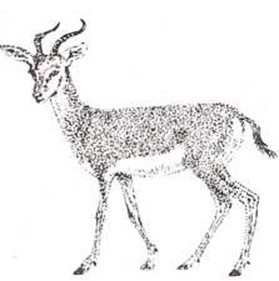
Gacela. Las diferentes clases de gacelas viven en pequeños grupos en Africa, India, Asia Menor y Mongolia. La mayoría de gacelas miden de 60 a 70 cm y pueden correr más deprisa que los caballos de carreras. Comen hierba.
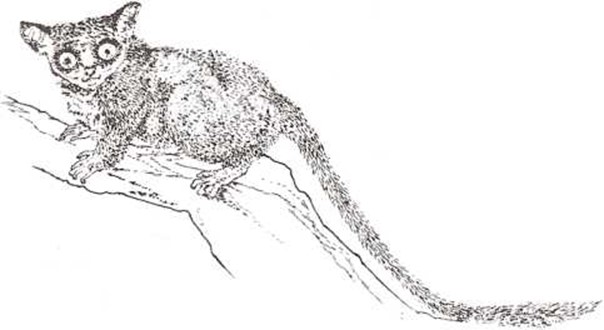
Gálago. Vive en las cálidas selvas africanas. Se mueve entre los árboles saltando de rama en rama. Algunos son tan grandes como gatos; otros, pequeños como ratas. El gálago come frutas, semillas y flores.

Gerbo. La mayor parte de los gerbos viven en los desiertos de Africa, Arabia y el sudoeste de Asia. Durante los días calurosos, el gerbo duerme en agujeros subterráneos. En las noches frías, el gerbo sale a cazar insectos y coger semillas. El gerbo mide unos 38 centímetros. Salta como un canguro y puede andar con dos patas.
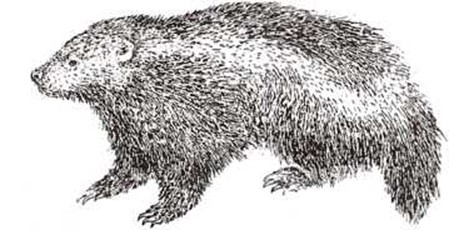
Glotón. El glotón vive en zonas del norte de América, de Europa y de Asia. Es un cazador fuerte y fiero. Come conejos y otros animales pequeños y, a veces, incluso renos. Al glotón le gusta vivir y cazar solo. Mide de 60 a 90 cm de largo.

Gorila. El gorila vive en África. Las familias de gorilas viven en la selva comiendo plantas tiernas y frutas. Algunos son tan altos como el hombre. Los gorilas son muy fuertes, pero no son peligrosos si no se les molesta.
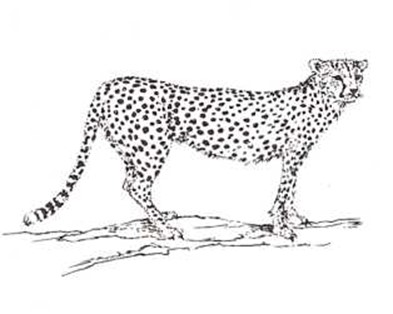
Guepardo. El guepardo es un gato grande, con manchas, que vive en los llanos herbáceos de África y partes de Asia. Mide algo más de 1 m de alto. El guepardo es el más rápido de los animales que corren. Obtiene su comida cazando gacelas, impalas y otros animales.
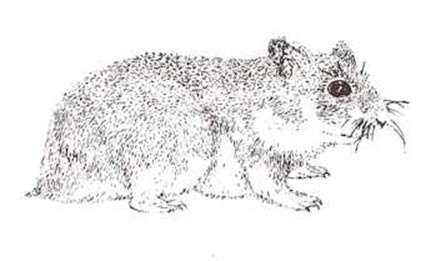
Hámster. Los hámsters salvajes viven en túneles subterráneos y duermen de día.’ Por la noche, salen a buscar semillas y frutos que almacenan en túneles. Los hámsters salvajes viven en el este de Europa y en el oeste de Asia. Miden unos 1 5 cm de largo.
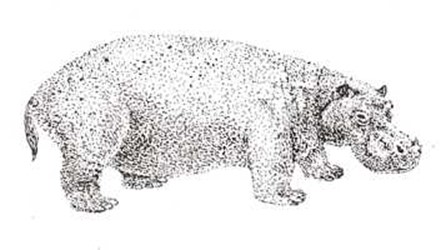
Hipopótamo. El hipopótamo vive en los pantanos y ríos de las partes más calurosas de África. Un hipopótamo grande puede tener 1,50 m de alto y 4,50 m de largo. Llegan a pesar 2 toneladas. El hipopótamo come hierba y plantas acuáticas.
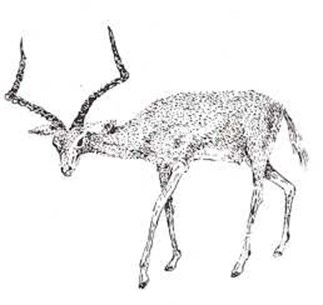
Impala. Grandes manadas de impalas viven en el campo abierto en el sur y este de África. El impala come hierba y hojas. Cuando está en peligro, hace un ruido como un estornudo. Entonces, todos los otros impalas salen saltando. El impala mide 1 m de alto.
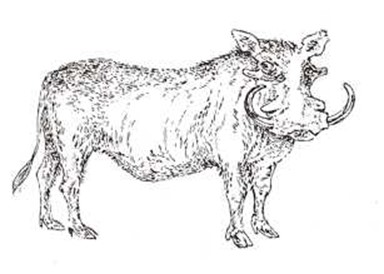
Jabalí verrugoso. Este animal debe su nombre a las grandes verrugas de su cara. El jabalí verrugoso vive en pequeños grupos en los lugares arenosos de África. Come hierba, raíces y, a veces, otros animales pequeños. El jabalí verrugoso mide unos 75 cm de alto.

Jirafa. El cuello de la jirafa es más largo que todo tu cuerpo. Pero la jirafa no tiene en el cuello más huesos de los que tú tienes en el tuyo. Los huesos de su cuello son más largos. Las jirafas viven en las llanuras herbáceas de África. Comen hojas y ramitas de acacia. Una jirafa recién nacida es tan alta como un hombre alto, y una jirafa adulta es tres veces más alta.
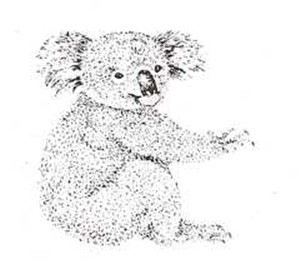
Koala. El koala come solamente hojas de eucaliptus y pasa la mayor parte de su vida en los árboles de eucaliptus. El koala madre tiene una bolsa como el canguro. Las crías permanecen en la bolsa durante seis meses; después montan a la espalda de su madre. El koala mide unos 70 centímetros. Vive en Australia.
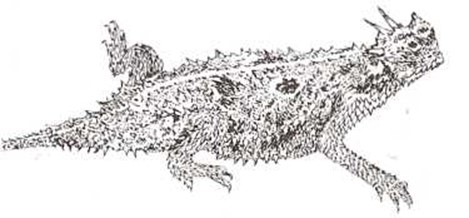
Lagarto cornudo. El lagarto cornudo vive en los desiertos y en los lugares secos de México y el oeste de los Estados Unidos. Mide unos 7 cm y come insectos y arañas. Cuando se le molesta echa sangre por los ojos.

León. El león es el único felino a quien le gusta vivir en manada. La mayoría de leones viven en Africa, pero quedan algunos en la India. El león mide más de 3 m de largo y 1 m de alto. El león caza y come cualquier animal grande, excepto elefantes, rinocerontes e hipopótamos. Generalmente la que caza es la leona.
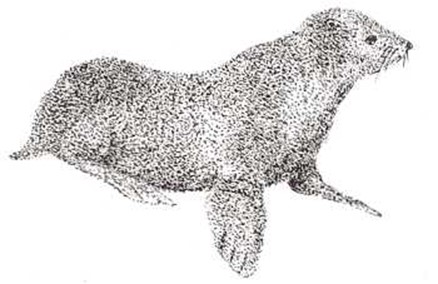
León marino. La mayoría de clases de leones marinos viven en manadas en el océano, a lo largo de las costas. El león marino respira aire, pero puede estar dentro del agua veinte minutos. Los leones marinos comen peces, calamares y aves marinas. El león marino mide 7 m de largo.
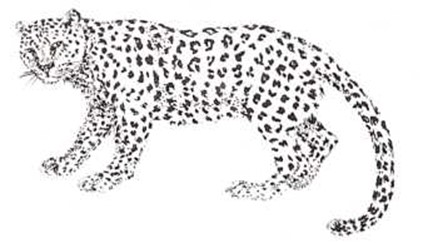
Leopardo. El leopardo vive solo, en las junglas de Africa y Asia. A veces se esconde en lo alto de los árboles y salta sobre ciervos y otros animales que pasan por debajo. El leopardo mide unos 2,50 m de largo. El leopardo de piel totalmente negra se llama pantera negra.
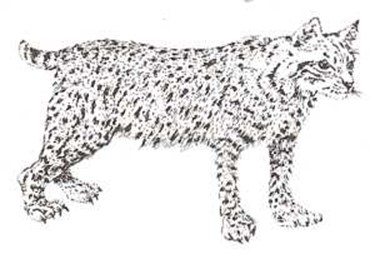
Lince rojo. El lince es un gato salvaje de cola corta que vive en los bosques y pantanos de América del Norte y México. Puede ver bien en la oscuridad y caza casi siempre de noche. Come conejos, ardillas e incluso ciervos y pavos silvestres. El lince mide cerca de 40 cm de alto.
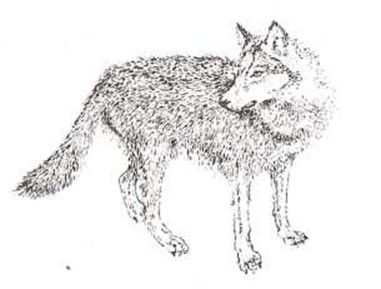
Lobo. Los lobos viven en Europa, Asia y América del Norte. Normalmente se mueven y cazan en manadas. El gran lobo de bosque come ciervos, alces y animales más pequeños. Los lobos más pequeños, como el lobo rojo, comen conejos y otros animales pequeños. El lobo de bosque mide 1 m de alto.
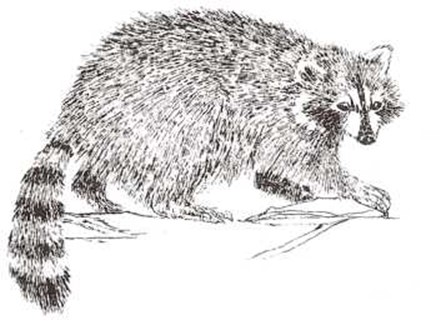
Mapache. El mapache vive en los árboles huecos y cuevas de los bosques de América del Norte y del Sur. Se sirve de sus patas como manos para coger cosas del agua y llevarse la comida a la boca. El mapache mide unos 80 cm de largo. Come ranas, tortugas, caracoles, insectos, cereales y frutas.
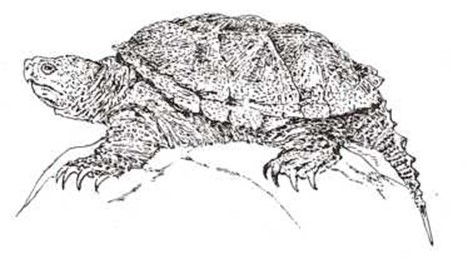
Mata-mata. La mayoría de tortugas son mansas, pero en cambio la mata-mata es fiera. Muerde con tal fuerza que sus mandíbulas hacen un ruido sonoro. La mata-mata vive en América del Norte y algún ejemplar llega a tener hasta 70 cm de largo. Come peces, insectos, cangrejos y plantas marinas.
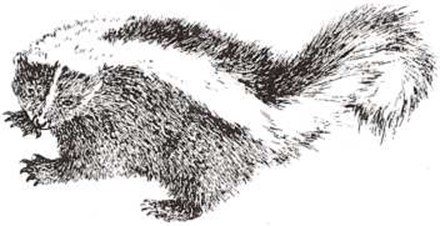
Mofeta. La mofeta vive en América del Norte y del Sur. Se defiende lanzando un líquido maloliente que sale de un lugar próximo a su cola. Los otros animales no pueden soportar el hedor y la dejan sola. La mofeta tiene el tamaño de un gato. Come hojas, insectos, frutas, nueces, ratas y otros animales pequeños.
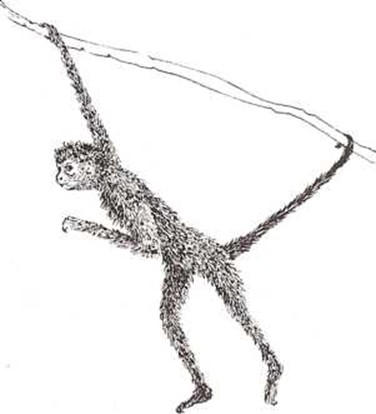
Mono araña. Estos monos viven en pequeños grupos en las junglas de América Central. El cuerpo del mono araña mide 60 cm de largo y su cola es más larga que su cuerpo. El mono usa la cola como una mano más para ir de árbol en árbol. El mono araña come insectos, fruta, flores y nueces.

Mono rhesus. El mono rhesus vive en grandes grupos en los bosques y en las colinas rocosas del sur de Asia. Es un animal muy listo y activo. Come hojas y frutos. A veces, entra en jardines y huertos a robar fruta. Mide unos 60 cm de alto.
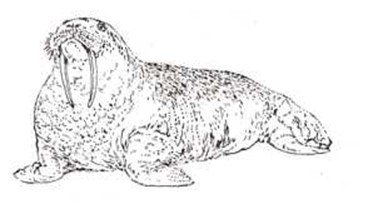
Morsa. Las morsas viven en manadas en el agua fría y en los hielos que flotan cerca del Polo Norte. La morsa come muchas almejas y animales de concha que saca del fondo arenoso del mar con sus largos colmillos. Una gran morsa macho mide unos 4 m de largo.
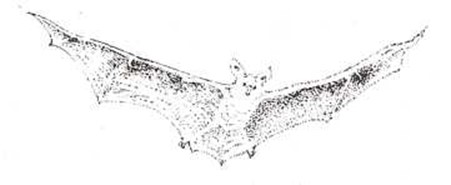
Murciélago. El murciélago es el único mamífero que vuela. Durante el día, los murciélagos duermen en cavernas y otros sitios oscuros. De noche, salen a comer. La mayoría de murciélagos comen insectos que cogen mientras vuelan. Algunos murciélagos comen fruta. Miden de 1 5 a 20 cm de largo.
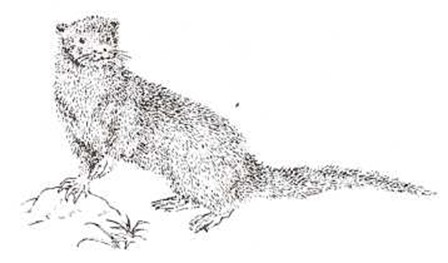
Nutria. Muchas clases ae nutrias viven cerca de los ríos y lagos, casi en todas las partes del mundo. Cierta clase de nutrias pasa la mayor parte de su vida en el mar. Las nutrias marinas comen peces, cangrejos, ranas y tortugas. Las nutrias miden un poco más de 1 m de largo.
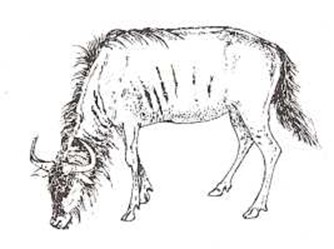
Ñu. El ñu parece grande y pesado, pero es uno de los animales más rápidos. Es tan grande como un burrito. Pasa las mañanas y tardes comiendo hierba y bebiendo agua. Durante el día, duerme. Los ñus viven en grandes manadas en las llanuras de Africa.
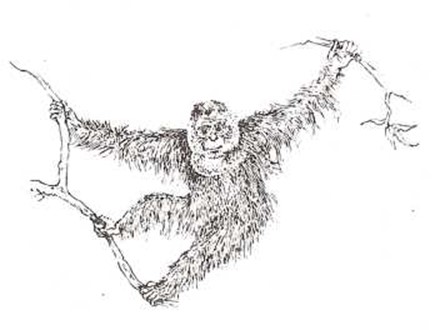
Orangután. Vive en pequeños grupos en las junglas de las islas de Borneo y Sumatra. Se mueve saltando de una rama a otra de los árboles con la ayuda de sus patas. El orangután mide de 1 m a 1,50 m de alto. Come frutos, flores, hojas e insectos.
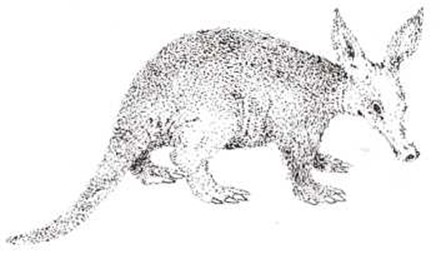
Oricteropo. El oricteropo llamado también cerdo hormiguero vive en África. Tiene hocico como el cerdo, orejas como el asno y sus patas acaban en garras afiladas. Con sus patas abre los nidos de termitas y se las lleva a la boca con su larga y dura lengua. El oricteropo mide de 1 a 2 m de largo.

Ornitorrinco. El ornitorrinco es un mamífero como el perro o el gato. Pero tiene un pico como un pato y pone huevos como un ave o un reptil. El ornitorrinco mide medio metro. Vive cerca de los ríos, en Australia. Come camarones, gusanos y renacuajos.
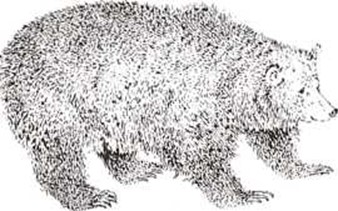
Oso. El oso blanco de Alaska es el carnívoro de tierra de mayor tamaño que existe. Mide unos 3 m de largo. El oso negro, que vive en América del Norte y México, mide poco menos de .2 m de largo. La mayoría de osos comen frutos, nueces, peces, insectos y animales pequeños. Todos los osos pueden ser peligrosos, incluso los domesticados.

Oso hormiguero. El hormiguero gigante vive en las praderas de hierba de América. Mide unos 2 m de largo y tiene el cuerpo de color marrón grisáceo con una marca blanca y negra en la garganta y espalda. El hormiguero ataca los nidos de termitas y las atrapa con su lengua larga y fuerte.

Panda. El panda gigante parece un oso de color blanco y negro. Pero muchos científicos creen que los panda, en realidad, son coatís. El panda gigante vive en las montañas del sur de la China. Come plantas de bambú jóvenes. El panda gigante mide 2 m de largo y 1 m de alto.
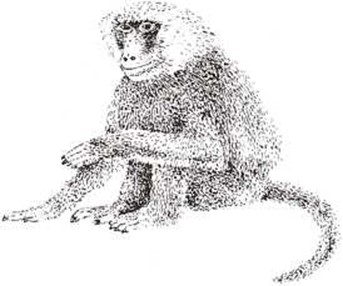
Papión. Los papiones parece que siempre están enfadados. Son muy fieros. Grandes manadas de papiones viven en los llanos de Africa. Comen lagartos, insectos y raíces. A veces se meten en las granjas y comen todo lo que encuentran. El papión mide casi 1 m de alto y anda a cuatro patas.
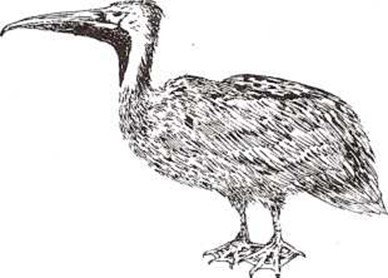
Pelícano. El pelícano vive en muchas partes del mundo. Es un campeón de la pesca de peces. Se sumerge en el agua con el pico abierto. La bolsa de debajo del pico se estira y traga agua y peces. Luego echa el agua y se come los peces. El pelícano mide más de 1,50 m de largo.

Pepinillo de mar. Este extraño animal vive en el fondo del mar. Uno de los extremos de su cuerpo es como una boca. Alrededor de esta boca tiene muchos brazos en forma de un manojo de hojas. Con estos brazos se lleva a la boca pequeñas plantas y animales. Los pepinillos de mar miden unos 30 cm de largo.

Perezoso. El perezoso vive en las selvas cálidas de América del Sur. Pasa la mayor parte de su vida colgado boca abajo de los árboles. Se mueve lentamente por las ramas, comiendo hojas y ramitas. Muy pocas veces baja al suelo y sólo para subirse a otros árboles. El perezoso mide unos 60 cm de largo.
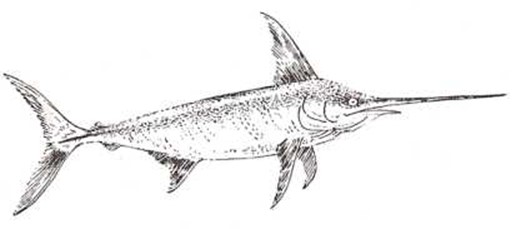
Pez espada. El pez espada vive en las zonas cálidas del océano. Nada entre grupos de pe-cecillos y mata todos los que puede con su punta afilada. Después, se come todos los peces que ha matado. El pez espada mide unos 2 m de largo.
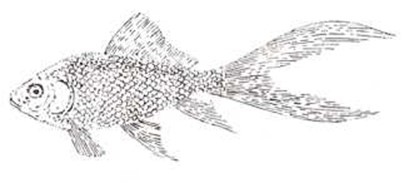
Pez rojo. Los peces rojos viven en peceras y estanques. Son rojos, anaranjados, amarillos, blancos e incluso negros. Algunos miden unos pocos centímetros de largo y otros miden más de 30 cm. Comen gusanos, pequeños insectos, migas de pan y trocitos de planta.
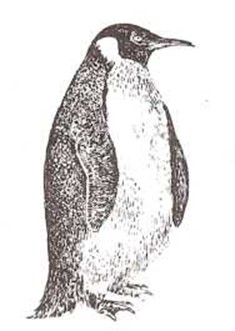
Pingüino. El pingüino, llamado más propiamente pájaro bobo, es un ave que no puede volar. Pero es un nadador maravilloso. Todos los pingüinos viven en la parte sur del mundo. Algunos viven incluso en los hielos de cerca del Polo Sur. El pingüino más grande mide más de 1 m de largo y el menor unos 25 centímetros. Comen peces y conchas de marisco.
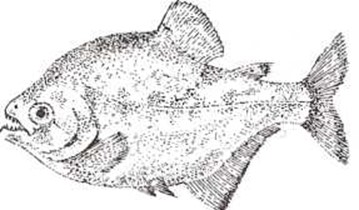
Piraña. Las pirañas nadan generalmente formando grandes grupos. Son más peligrosas que los tiburones. Se precipitan sobre cualquier animal que cae al agua y se lo comen, no dejando más que los huesos. Las pirañas viven en los ríos de América del Sur. La piraña mide de 10 a 45 cm de largo.
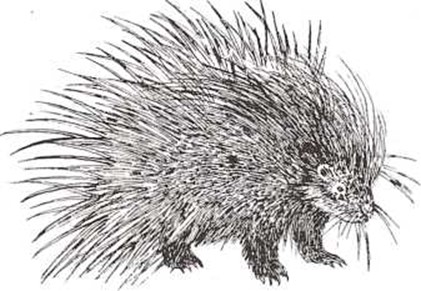
Puercoespín. El puercoespín está bien protegido por largos pinchos llamados púas, que cubren todo su cuerpo. Los puercoespines americanos suben muy bien a los árboles, pero en cambio otros no pueden hacerlo. El puercoespín mide cerca de 1 m de largo. Come cortezas y raíces de árbol.
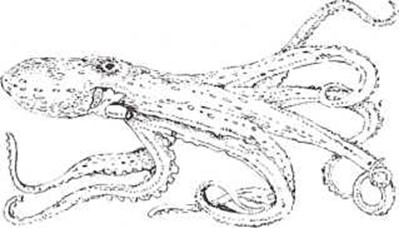
Pulpo. El pulpo tiene un cuerpo redondo, ojos abultados y ocho brazos llamados tentáculos. Su boca es como un pico de loro. El pulpo coge langostas y otros animales marinos con sus tentáculos y los destroza con su pico. La mayoría de pulpos son del tamaño de la mano del hombre.
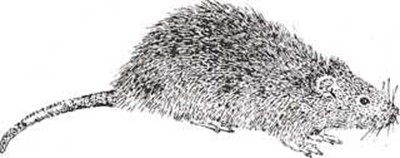
Rata. Las ratas viven en casi todas las partes del mundo. La rata negra y la gris comen de todo y destruyen mucha comida. Son vehículo de enfermedades. El cuerpo de la rata negra mide casi 20 cm de largo. Su delgada cola es más larga que su cuerpo.
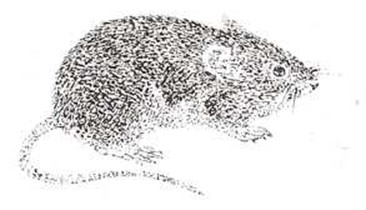
Ratón. Los ratones viven en pantanos, selvas, desiertos y casas, en casi todas las partes del mundo. La mayoría comen simientes, granos, fruta y nueces. Algunos comen insectos; otros se comen otros ratones. La mayoría miden de 10 a 20 cm de largo.
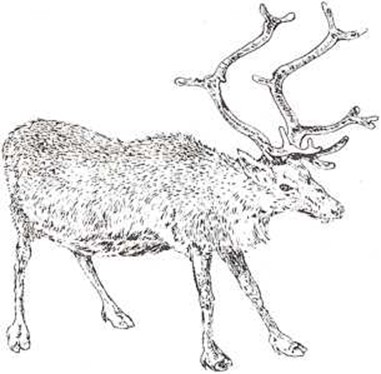
Reno. Grandes manadas de renos viven en las zonas frías y alejadas del norte de la Tierra. El reno tiene un abrigo de pieles espeso y ancho y pezuñas redondas, que le ayudan a andar por la nieve. Come hierba en verano y musgo en invierno. El reno mide 1 m de alto.
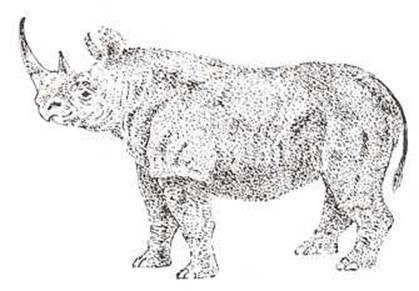
Rinoceronte. Las distintas clases de rinoceronte viven en Africa y parte de Asia. El rinoceronte come hierba y hojas de arbustos. Pasa la mayor parte del tiempo tumbado en el barro húmedo y blando. El rinoceronte blanco mide más de 1,50 m de alto.

Serpiente de cascabel. La serpiente de cascabel vive en muchas partes de América del Norte y del Sur. Tiene cascabeles de hueso en la cola que suenan cuando la serpiente se mueve. La serpiente de cascabel mata animales pequeños con veneno, y después se los traga enteros. La serpiente de cascabel de espalda de diamante mide más de 2 m de largo.
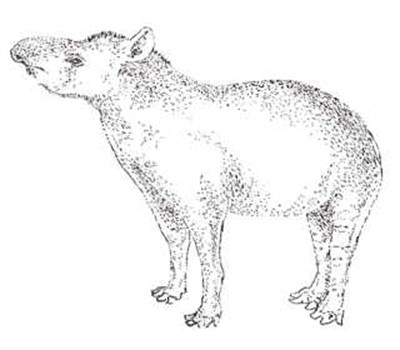
Tapir. El tapir vive en las selvas cálidas de América del Sur, en Malaya y Sumatra. Tiene cuatro dedos en sus patas delanteras, pero sólo tres en las traseras. El tapir de América del Sur mide 2m de largo y 1 m de alto. Come plantas y frutos.
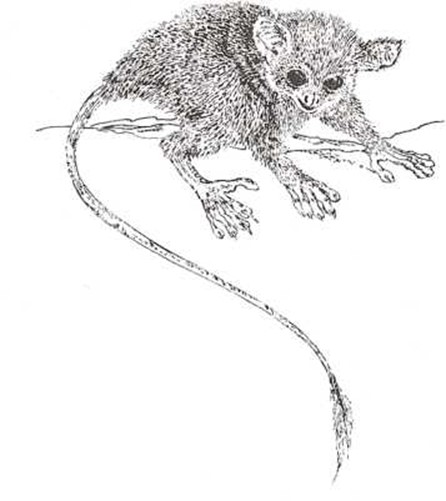
Tarsero. El tarsero vive en árboles de las Indias Orientales y de Filipinas. Es un gran saltador y atrapa insectos y lagartos saltando sobre ellos y cogiéndolos con sus manos. El cuerpo del tarsero mide unos 1 5 cm de largo.
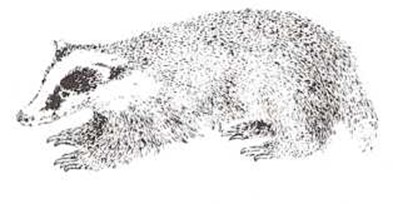
Tejón. Los tejones viven en muchas partes del mundo. Los tejones europeos y asiáticos miden cerca de 1 m de largo. Los americanos son más pequeños. El tejón come conejos, serpientes, ratas e insectos. Es un buen luchador. Si un animal más grande entabla una lucha con el tejón, el tejón casi siempre gana.
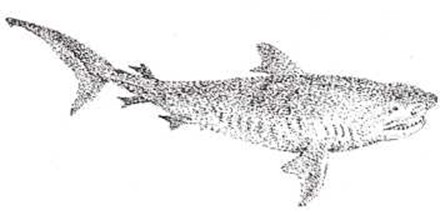
Tiburón. El tiburón es un gran pez que normalmente vive en las zonas calientes del océano. Come peces pequeños y cualquier otra cosa que pueda cazar, incluso personas. El tiburón más grande mide unos 1 7 m de largo, y come sólo pececillos y plantas.
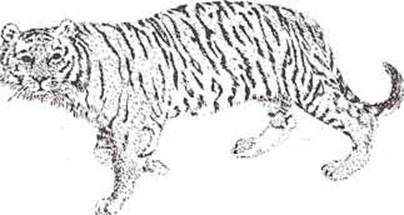
Tigre. Los tigres viven en muchas partes de Asia, tanto en las cálidas junglas del sur, como en los nevados bosques del norte. Al tigre le gusta cazar y vivir solo. Come ciervos, antílopes, ganado salvaje e incluso elefantes jóvenes. La mayoría de los tigres miden más de 3 m de largo.

Titi. Es el más pequeño de los monos. Su cuerpo mide sólo 10 cm de largo. El titi vive en las cálidas selvas del Amazonas, en América del Sur. Pasea por los árboles cogiendo nueces, frutas e insectos para comérselos.
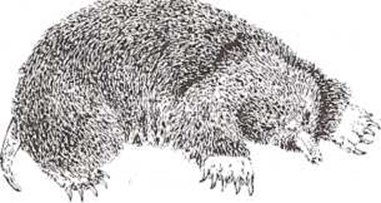
Topo. El topo pasa la mayor parte de su vida bajo tierra. Cada día excava túneles para encontrar gusanos y alimentos. El topo ve con mucha dificultad, pero oye y huele muy bien. La clase más conocida de topos mide cerca de 20 cm de largo. Los topos viven en América del Norte, Africa, Europa y Asia.
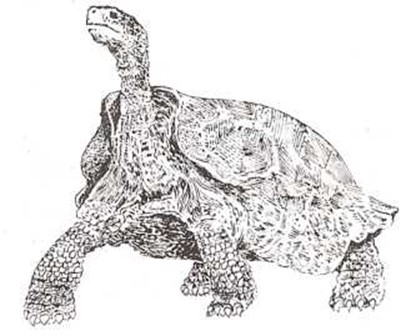
Tortuga. Ésta es la tortuga terrestre. La mayor parte de estas tortugas viven en las islas Galápagos, cerca de América Central. La tortuga de las Galápagos es tan grande que un niño puede fácilmente montar a su grupa. Come hierba, fruta y plantas. Algunas de estas tortugas tienen más de 100 años.
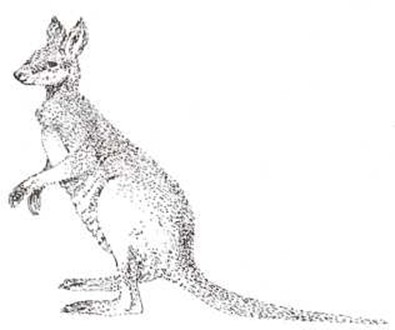
Ualaby. El ualaby pertenece a la familia de los canguros. Parece un canguro pequeño y gordo con patas cortas. La madre ualaby guarda sus pequeños en una bolsa igual que hace la madre canguro. El ualaby come hojas y plantas. Vive en Australia.

Vampiro. Sí, realmente existe el vampiro. Pero no chupa la sangre. Hiere a los animales que están durmiendo con sus afilados dientes y lame la sangre con su lengua. El vampiro mide sólo 7 cm de largo. Vive en América Central y del Sur.

Vombat. El vombat vive en Australia y Tasma-nia. Es un animal excavador y vive en túneles subterráneos durante el día. Por la noche, sale para comer hierba, cortezas y raíces. La madre vombat, como la madre canguro, tiene una bolsa para guardar a sus crías. El vombat mide cerca de 1 m de largo.
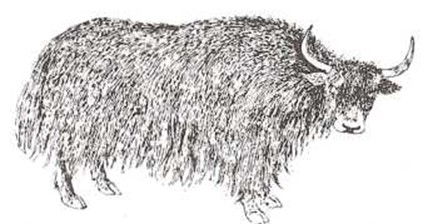
Yak. El yak pertenece a la familia de las vacas. Vive en las regiones altas del Tíbet. Hay rebaños de yaks salvajes, pero las gentes del Tíbet tienen también rebaños de yaks domésticos. El yak salvaje tiene unos 2 m de alto. El yak doméstico es un poco más pequeño. El yak come hierbas.

Zorro. El pequeño zorro rojo vive en América del Norte, Europa, Asia y norte de Africa. Durante el día, permanece en su madriguera. Por la noche, sale para cazar ardillas, ratas, insectos y animales pequeños. Los zorros pertenecen a la familia de los perros.


holaaaaaaaaaaaaaaaaaaaaaaaaaaaaaaaaaaaaaaaaaaaaaaaaaaaaaaaaaaaaaaaaaaaaaaaaaaaaaaaaaaaaaaaaaaaaaaaaaaaaaaaaaaaaaaaaaaaaaaaaaaaaaaaaaaaaaaaaaaaaaaaaaaaaaaaaaaaaaaaaaaaaaaaaaaaaaaaaaaaaaaaaaaaaaaaaaaaaaaaaaaaaaaaaaaaaaaaaaaaaaaaaaaaaaaaaaaaaaaaaaaaaaaaaaaaaaaaaaaaaaaaaaaaaaaaaaaaaaaaaaaaaaaaaaaaaaaaaaaaaaaaaaaaaaaaaaaaaaaaaaaaaaaaaaaaaaaaaaaaaaaaaaaaaaaaaaaaaaaaaaaaaaaaaaaaaaaaaaaaaaaaaaaaaaaaaaaaaaaaaaaaaaaaaaaaaaaaaaaaaaaaaaaaaaaaaaaaaaaaaaaaaaaaaaaaaaaaaaaaaaaaaaaaaaaaaaaaaaaaaaaaaaaaaaaaaaaaaaaaaaaaaaaaaaaaaaaaaaaaaaaaaaaaaaaaaaaaaaaaaaaaaaaaaaaaaaaaaaaaaaaaaaaaaaaaaaaaaaaaaaaaaaaaaaaaaaaaaaaaaaaaaaaaaaaaaaaaaaaaaaaaaaaaaaaaaaaaaaaaaaaaaaaaaaaaaaaaaaaaaaaaaaaaaaaaaaaaaaaaaaaaaaaaaaaaaaaaaaaaaaaaaaaaaaaaaaaaaaaaaaaaaaaaaaaaaaaaaaaaaaaaaaaaaaaaaaaaaaaaaaaaaaaaaaaaaaaaaaaaaaaaaaaaaaaaaaaaaaaaaaaaaaaaaaaaaaaaaaaaaaaaaaaaaaaaaaaaaaaaaaaaaaaaaaaaaaaaaaaaaaaaaaaaaaaaaaaaaaaaaaaaaaaaaaaaaaaaaaaaaaaaaaaaaaaaaaaaaaaaaaaaaaaaaaaaaaaaaaaaaaaaaaaaaaaaaaaaaaaaaaaaaaaaaaaaaaaaaaaaaaaaaaaaaaaaaaaaaaaaaaaaaaaaaaaaaaaaaaaaaaaaaaaaaaaaaaaaaaaaaaaaaaaaaaaaaaaaaaaaaaaaaaaaaaaaaaaaaaaaaaaaaaaaaaaaaaaaaaaaaaaaaaaaaaaaaaaaaaaaaaaaaaaaaaaaaaaaaaaaaaaaaaaaaaaaaaaaaaaaaaaaaaaaaaaaaaaaaaaaaaaaaaaaaaaaaaaaaaaaaaaaaaaaaaaaaaaaaaaaaaaaaaaaaaaaaaaaa